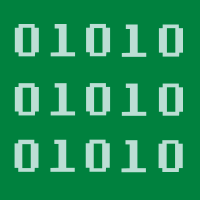Topic Menu
► Topic MenuTopic Editors


Selected Papers from ICCAI 2023 and IMIP 2023
Topic Information
Dear Colleagues,
The 2023 9th International Conference on Computing and Artificial Intelligence (ICCAI 2023) and its combined conference—the 2023 5th International Conference on Intelligent Medicine and Image Processing (IMIP 2023)—are international conferences devoted specifically to the facilitation of synergies in research and development in the areas of computer and artificial intelligence, intelligent medicine and image processing. They provide communication platforms for leading experts and scholars worldwide.
This Topic will mainly focus on computer technology, information technology, intelligent computing, artificial intelligence, smart healthcare, medical informatics, medical imaging and image processing and other related areas. We cordially invite authors of selected papers from the conference to submit extended versions of their original papers and contributions under the conference topics.
Prof. Dr. Zhitao Xiao
Dr. Guangxu Li
Topic Editors
Keywords
- entropy
- information theory
- computational mathematics
- pattern recognition
- signal processing
- smart healthcare
- bio-informatics
- nonlinear dynamics
- biological optics
- image processing
Participating Journals
| Journal Name | Impact Factor | CiteScore | Launched Year | First Decision (median) | APC |
|---|---|---|---|---|---|

Computers
|
4.2 | 7.5 | 2012 | 16.3 Days | CHF 1800 |

Entropy
|
2.0 | 5.2 | 1999 | 21.8 Days | CHF 2600 |

Information
|
2.9 | 6.5 | 2010 | 18.6 Days | CHF 1800 |

Mathematics
|
2.2 | 4.6 | 2013 | 18.4 Days | CHF 2600 |

Preprints.org is a multidisciplinary platform offering a preprint service designed to facilitate the early sharing of your research. It supports and empowers your research journey from the very beginning.
MDPI Topics is collaborating with Preprints.org and has established a direct connection between MDPI journals and the platform. Authors are encouraged to take advantage of this opportunity by posting their preprints at Preprints.org prior to publication:
- Share your research immediately: disseminate your ideas prior to publication and establish priority for your work.
- Safeguard your intellectual contribution: Protect your ideas with a time-stamped preprint that serves as proof of your research timeline.
- Boost visibility and impact: Increase the reach and influence of your research by making it accessible to a global audience.
- Gain early feedback: Receive valuable input and insights from peers before submitting to a journal.
- Ensure broad indexing: Web of Science (Preprint Citation Index), Google Scholar, Crossref, SHARE, PrePubMed, Scilit and Europe PMC.

